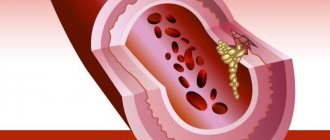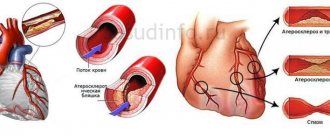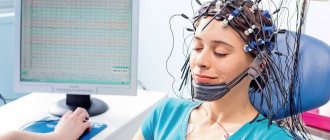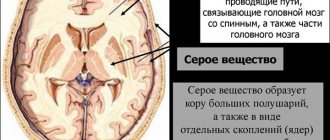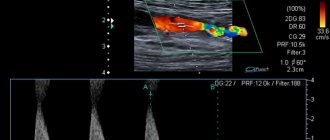What diseases of the heart and blood vessels do children suffer from?
Medical studies show that most often children are susceptible to arterial hypertension, coronary heart disease, heart rhythm disturbances and even atherosclerosis. Despite the fact that all these diagnoses are more common for older people, children also suffer from such pathologies, and the development and course of the disease does not differ from adult ailments. All pathologies are interconnected and often combined together.
- Arterial hypertension is an increase in blood pressure above normal (up to 15 years of age, the normal blood pressure is 110 over 70, raising the upper limit to 120-125 units is not critical). According to various studies, from 10 to 35 percent of children and adolescents suffer from hypertension.
- Coronary heart disease is an acute lack of oxygen for the normal functioning of the heart muscle. The causes of this pathology are arterial hypertension, atherosclerosis and other diseases. Studies have identified 5% of children with cardiac ischemia, and 91% of cases are not associated with heart pathology - ischemia develops as a result of external factors.
- Heart rhythm disturbance is a change in the rhythm of heart contractions, the occurrence of abnormal impulses, which contributes to disruptions in the functioning of the heart. There is no reliable data on the number of sick children, but doctors register from 3 to 27 percent of cases in which children were diagnosed with arrhythmia. The main problem of the pathology lies in the disturbance of the conduction of cardiac impulses, inhibition of the function of the sinus node, and problems in the formation of the cardiac impulse.
- Atherosclerosis is a lesion of blood vessels, as a result of which their walls contain cholesterol deposits - plaques. Signs of pathology appear by the age of ten, and formed plaques can be diagnosed as early as 13-15 years. 10% of children under fifteen years of age suffer from this pathology.
Which doctor should I contact?
The vascular system is one of the most complex mechanisms in the human body; various highly specialized specialists are involved in the treatment of diseases.
Which doctors treat vascular diseases:
- neurologist – eliminates vascular pathologies in the brain;
- phlebologist – treats varicose veins of the lower extremities, thrombophlebitis, inflammatory processes of the venous wall;
- cardiologist – specialist in heart diseases;
- angiologist – a doctor specializing in diseases of the arteries and lymphatic system;
- immunologist – treats lupus erythematosus, vasculitis, which often cause problems with blood circulation and blood vessels;
- Sometimes you may need to consult an allergist, dermatologist, or surgeon.
If you have heart problems, you should visit a cardiologist
A newborn often develops a hemangioma - a proliferation of blood vessels, and a convex red spot appears on the neck. The neoplasms themselves are not dangerous, but they negatively affect blood clotting and the immune system. It is necessary to consult with an oncologist and a surgeon, but in most cases no specific treatment is required, the problem disappears on its own by the age of 10.
Problems with blood vessels often occur in women during menopause - female sex hormones protect the walls of blood vessels from cholesterol.
Congenital heart defects: something went wrong from the start
They are formed due to improper intrauterine development of blood vessels, heart valves, septa or walls extending from the heart.
The most common types are ventricular or atrial septal defect, patent foramen ovale, accessory chord, patent aortic duct, aortic or pulmonary stenosis. Defects can be single or combined. The changes disrupt the movement of blood inside the heart and/or through the vessels.
Severe defects are diagnosed by ultrasound in the womb or immediately after birth. However, it is often difficult to detect the disease in the first months or years of life. Often the defect is “inaudible”, and the child develops normally up to a certain point.
In young years
During feeding, the child gets tired quickly and does not gain weight well. There is bluishness of the skin around the lips or unusual pallor of the skin, shortness of breath during play or at rest. The baby often suffers from acute respiratory viral infections or pneumonia, and may lose consciousness for a short time.
In older age
Children complain of pain in the chest, headaches, “fading” or interruptions in the heart, and difficulty breathing. They do not tolerate physical activity well: playing, climbing stairs, running.
What is the insidiousness
Retarded physical and mental development, cardiovascular failure, frequent prolonged pneumonia, changes in fingers like “drumsticks”, nails like “watch glasses”, attacks of loss of consciousness, often with impaired blood circulation in the brain.
How to proceed
You cannot do without medical help. A baby with a severe defect is not viable and requires surgical intervention immediately after birth. Correction of less complex defects is carried out later, when the child is a little older and stronger.
Children with defects require long-term observation by a cardiologist and prescription of medications to maintain heart function before and after surgery.
For minor anomalies, surgery is not indicated - for example, with an additional chord. The child does not lag behind his peers in development, and, upon reaching adulthood, leads a normal lifestyle.
In addition to congenital and acquired classification of diseases, there are:
- Defects at the location of the defect (in the mitral, aortic, tricuspid valve or foramen ovale).
- Also based on anatomical changes in the heart muscle (stenosis, coarctation, atresia, hypoplasia, as well as defects in cardiac structures).
- According to the degree of pathology, based on hemodynamic data (grades 1, 2, 3 and 4).
With the first type of defects, there is a discharge of blood from left to right. There is no mixing of arterial and venous. In the second type, there is a reflux of venous blood into arterial blood, characterized by cyanosis.
These include:
- Fallot's disease.
- Transposition of the great vessels.
- Common arterial trunk.
- Atresia of the tricuspid valve.
Until recently, most of these pathologies took the lives of children, often even at the intrauterine stage of development. Now such children are helped, complex operations are performed, and they not only survive, some of them have a chance of a full recovery.
Types of ailments
As mentioned earlier, this group of diseases is extremely broad. It includes a fairly large list of diseases, among which we can highlight those that are more common:
- Congenital heart defect. The main reason for its development is that the blood circulation process is disrupted while the fetus is in the womb. Among the factors that provoke the occurrence of a defect, one can name such as the negative impact of environmental factors, the illness of the expectant mother with an infectious disease (infection in the first trimester of pregnancy is especially dangerous). In addition, chronic diseases of the expectant mother, an allergic reaction to taking medications, drinking alcohol, smoking, and a hereditary predisposition of one of the child’s relatives to diseases of the cardiovascular system are also dangerous for the health of the unborn child.
Among the main symptoms of cardiovascular diseases in children are retarded physical and mental development, slow weight gain, nervousness and irritability of the newborn, pale skin, fatigue, etc. The presence of an open foramen ovale or atrial septal defects, which do not have intense signs of manifestation are treated with drug therapy. In this case, the child should be under constant supervision of specialists.
- Aortic stenosis. The development of this disease leads to obstruction of blood flow from the left ventricle to the aorta. The main reason for the difficulty is that there is a narrowing of the lumen between the leaflets of the heart valve or aorta. Among the main symptoms of the disease are shortness of breath, pale skin or slight cyanosis in the lips and nose, tachycardia, chest pain, headaches, fainting, and dizziness. Fainting occurs mainly with increased physical activity. Therefore, playing sports with this diagnosis should be excluded. Surgery is the only way to get rid of this disease.
- Isolated pulmonary artery stenosis. The presence of a defect of this kind has a negative effect on the direction of blood flow in the pulmonary circulation and blood vessels; in most cases, the presence of such a defect does not in any way affect the normal growth and development of the child. It is only discovered by chance during a routine medical examination between the ages of 5 and 12 years. With a pronounced form of isolated pulmonary artery stenosis, the baby complains of frequent and rapid fatigue, pain in the sternum, and a strong heartbeat. In this case, you cannot do without drug treatment.
- Aortic coarctation. In this case, heart disease in children consists of a narrowing of the lumen of the aorta over a fairly long period, which impedes the process of blood flow. As a result, blood moves in two directions: above and below the narrowing of the aorta. When such a pathology develops to a small extent, the child does not complain of any signs of the disease. Otherwise, weakness of the lower extremities, fatigue, dizziness and headaches, nosebleeds, fainting, etc. may occur. Children may often experience attacks associated with high blood pressure. In this case, immediate surgical intervention is required.
- Tetralogy of Fallot. This disease refers to complex congenital heart defects in children. As a rule, it is complex. This means that the defect consists of pathologies such as pulmonary artery stenosis, pathology of the interatrial septum, hypertrophy of the septum between the atria.
The main signs of the disease are severe shortness of breath, restlessness of the child, fatigue, chest pain, short-term fainting, cramps of the lower extremities, etc. In most cases, children with this disease have a constant desire to sit down and press their knees to their chest. Treatment consists only of surgery.
- Various types of arrhythmias. These are various disturbances in the development and functioning of the heart and blood vessels, which over time lead to disturbances in the frequency of heart contraction, as well as its intensity. A characteristic feature of this disease is that it intensifies as the patient ages. According to statistics, the disease tends to manifest itself after suffering a nervous shock or stress.
If a child is completely healthy, such a pathology may manifest itself in the event of severe nervous or physical stress, overheating in the sun, experienced fear, or as a result of exposure to negative environmental factors.
- Rheumatism. This disease is of infectious or allergic origin, which is a consequence of damage to the cardiovascular system, joints of the arms and legs, tonsillitis, sore throat, streptococcal infection. The disease is manifested by rapid fatigue, susceptibility to frequent colds, elevated body temperature, swelling of the lower extremities, painful sensations in the joints, etc. As a rule, symptoms begin to appear at 2–3 weeks of its development. Treatment of the disease consists of drug therapy and bed rest for the patient. In addition, the child needs constant supervision by a specialist.
The nature of treatment therapy depends entirely on the type of disease, its degree of development, the age of the child and other factors. In any case, if one or more symptoms of heart disease are detected in a child, you should immediately consult a specialist. The prevention of cardiovascular diseases in children and adolescents should be given as much attention as possible.
Signs of cardiovascular disease in children
Diseases of the heart and blood vessels can cause symptoms already in infancy. Children under one year old have the following signs of cardiovascular pathologies:
- low Apgar scores at birth;
- long-lasting bluishness of the skin;
- increased fatigue;
- heart murmurs during auscultation;
- irritability, crying;
- swelling of the nasolabial triangle with a characteristic bluish tint;
- cough that gets worse at night.
Very often, parents do not pay attention to indirect signs of cardiovascular pathologies in children of preschool and school age. You need to pay attention to the following symptoms of heart pathologies:
- child's complaints of chest discomfort;
- pain radiating to the arm;
- tingling in the throat, in the lower jaw area;
- snoring during sleep;
- nausea, stomach pain, heartburn;
- fatigue;
- sudden flushes of blood to the face;
- attacks of cold sweat;
- swelling of the lower extremities;
- prolonged cough for no reason.
Diagnosis and treatment of cardiovascular diseases in children at the Yauza Clinical Hospital
Doctors of the pediatric department of the Yauza Clinical Hospital have all the capabilities for a thorough and comprehensive diagnosis of cardiovascular diseases in children. In particular, our own laboratory performs the necessary tests; it is possible to do an ultrasound of the cardiovascular system, an ECG, and regularly monitor blood sugar and cholesterol levels.
For treatment, doctors choose the most gentle methods, paying great attention to the prevention of the development of cardiac diseases and non-drug treatment methods. If necessary, doctors consult with colleagues from other specialties to choose the best treatment option.
Features of adolescent cardiovascular system
The child’s cardiovascular system has a number of anatomical features that determine the characteristics of its functioning. So, when compared with the total body weight, the heart of a newborn is much larger than the heart of an adult. At the same time, the organ grows quite intensively, and by the age of 3 years its weight increases three times compared to a newborn, and by 6 years - 11 times.
Due to the high intensity of metabolism, as well as due to the peculiarities of regulation of the work of the heart muscle, the heart rate in children is higher than in adults: in newborns, the heart rate reaches 140-160 beats per minute, by the first year it decreases to 140, by 5 By the age of 15, the heart rate drops to 100 beats per minute, and by the age of 15 it reaches a normal level (approximately 80 beats per minute).
Also, in childhood, the heart has some anatomical features that create the preconditions for “wrong” blood flow. This so-called foramen ovale is an opening through which the right and left atria can communicate. Over time, it should close in the child, and doctors will certainly monitor this process.
Parents should pay special attention to the health of their child during adolescence. During this period, it grows rapidly, and the heart muscle also increases. Such changes can provoke the development of various cardiovascular diseases:
- Bicuspid valve prolapse. A pathology in which there is a malfunction of the valve located between the left atrium and the ventricle.
- Neurocirculatory dystonia is a multifactorial disease that can occur against the background of stressful situations. It is characterized by primary functional disorders of the cardiovascular system, which are based on an imperfection or disorder in the regulation of autonomic functions not related to neurosis or organic pathology of the nervous and endocrine systems.
- VSD is a complex of common problems that often arise at this age due to changes in the body. A teenager's body grows quickly, but the cardiovascular system cannot keep up with it. Therefore, such a diagnosis can be made to almost every second person aged 13-16 years. Internal organs do not receive enough oxygen, tachycardia and headaches are observed.
When to sound the alarm:
- the appearance of shortness of breath;
- cyanosis or excessive pallor of certain areas;
- swelling;
- dry cough;
- pain in the heart area;
- heart murmurs or tachycardia.
In any case, you cannot do without consulting a specialist. It is necessary to conduct a thorough examination and monitor the condition of the disease. Many of them are treated in the early stages and do not make themselves felt in adulthood.
The mass of a child's heart, relative to his body, is significantly greater than that of an adult. Accordingly, the heart rate is higher. It decreases with age, but during puberty there is a jump again.
As the body grows, internal organs also grow. Sometimes a picture is noted that the cavities of the cardiovascular system increase faster than the lumens of the valve openings of the main veins. In this regard, “youthful” heart syndrome is identified.
There are three forms:
- mitral;
- teenage drip heart syndrome;
- organ hypertrophy.
As the child grows, the number of blood vessels also increases.
Acquired heart defects
Congenital and acquired heart defects are similar in their effects. Among acquired heart valve defects, the most common are diseases of the aortic and mitral valve. Thanks to antibiotic prophylaxis of rheumatic complications, mitral and aortic valve defects have become less frequent.
Cardiac arrhythmia
In children and newborns, the frequency of contractions of the heart muscle is much higher than in adults. For newborns, the frequency is 110-150 beats per minute, for children of primary preschool age 85-115, and at school age it is 80-90 beats.
High heart rate
Arrhythmia occurs when there is any deviation from normal cardiac activity. When it occurs, the frequency and/or regularity of the sequence of heart contractions is disrupted. Therefore, there are different types of rhythmic disorders: bradycardic, in which the heart beats too slowly, and tachycardic disorders, in which it beats too fast.
These findings have a different meaning if there is an underlying medical condition, such as inflammation of the heart muscle after influenza infection.
Important! Often no one takes the first signs seriously. Signs of inflammation are noticed only after several additional examinations. Therefore, if any suspicions arise, it is recommended to consult a doctor for advice.
Pericarditis is often ignored and easily attributed to physical overexertion. It is noticeable only in the fast phases of the heart rate, especially with irregular heartbeat. Nausea, dizziness, or chest pressure may be the first signs of an arrhythmic disorder; in rare cases, fainting occurs. Children with cardiovascular diseases require constant monitoring by a cardiologist.
Preventive measures for heart and vascular health in children
The key to the coordinated functioning of the circulatory system is the early prevention of heart disease in children and adolescents. Such measures can be implemented from the very birth of the child.
Doctors have identified risk factors that contribute to the occurrence of cardiovascular diseases, while the early development of atherosclerotic changes was carried over into childhood. Three stages of development of vascular pathology have been identified:
- stage zero - observed in newborns and is expressed in intimal thickening;
- first stage - develops at the age of three to five years, in children the first lipid deposits form in the form of stripes on the walls of blood vessels;
- the second stage is the appearance of fibrous plaques, usually recorded in children from eight years of age and older, and the process continues until adulthood (about 25 years);
- third stage - complicated fibrous plaques are registered in adults over 25 years of age who did not engage in the prevention of cardiovascular pathologies in childhood.
The World Health Organization has identified four measures to prevent cardiovascular pathologies in patients of all ages, including children. The same recommendations were supported by the Russian Society of Cardiology. Such measures include:
- getting rid of bad habits;
- proper nutrition;
- weight normalization;
- physical activity.
Heart disease in children
Heart diseases can be congenital or acquired. Most congenital pathologies are diagnosed at the fetal stage of development of the baby. Many of them can only be eliminated with the help of surgeons.
Acquired ones can occur regardless of age. The reasons for this can be different: from an infection in childhood to illness of the mother during pregnancy.
Common diseases of the cardiovascular system (CVS):
- Arrhythmia. A pathological condition of the heart in which there is a disturbance in the rhythm, contraction and sequence of excitation of the heart muscle. The disease can appear regardless of age, often after serious disorders of the nervous system. Arrhythmia also occurs in healthy children. It is noted against the background of physical activity, under the influence of heat or strong emotional shocks.
- Vegetative-vascular dystonia syndrome (VSD). Diagnosed due to a pronounced whole complex of various symptoms. It manifests itself in children in the form of cardiac, respiratory, neurotic syndromes, vegetative-vascular crises, and thermoregulation disorder syndrome. To treat VSD in children, medications, physiotherapy, and psychological methods are used.
- Defects and anomalies in the development of the cardiovascular system. Such problems appear even at the intrauterine stage of development. Negative external factors that affected a woman during 4-8 weeks of pregnancy (previous viral diseases such as influenza, rubella, chronic diseases, work in hazardous industries, drug treatment, hereditary factors, bad habits) have a great influence.
The number of children suffering from heart disease is increasing every year. Stressful conditions, poor quality nutrition, poor environmental situation - all this negatively affects preschool children. Many of them become disabled. Everything is aggravated by the fact that the child cannot clearly express his complaints, so most diseases are diagnosed only during an examination by a doctor.
You should not skip routine pediatric examinations.
Heart hump: what is it, reasons for its formation
This is the formation of a rounded bulge at the level of the sternum. Occurs due to congenital heart pathologies. In the 6th and 7th intercostal spaces, tremors of the heart muscle are visible. There is also cyanosis of the child's lips and face. Pain in the heart area, cough, hoarse voice, and bouts of hiccups are noted. To get rid of a heart hump, you need to eliminate the root cause - congenital heart pathology. After the examination, the cardiac surgeon will tell you what to do and prescribe an operation. Self-medication in such cases can be deadly.
"White" and "blue" vices
In addition to congenital and acquired classification of diseases, there are:
- Defects at the location of the defect (in the mitral, aortic, tricuspid valve or foramen ovale).
- Also based on anatomical changes in the heart muscle (stenosis, coarctation, atresia, hypoplasia, as well as defects in cardiac structures).
- According to the degree of pathology, based on hemodynamic data (grades 1, 2, 3 and 4).
According to hemodynamic parameters, defects are divided into:
- "white";
- "blue".
With the first type of defects, there is a discharge of blood from left to right. There is no mixing of arterial and venous. In the second type, there is a reflux of venous blood into arterial blood, characterized by cyanosis.
Balanced diet
Thanks to nutrition, a normal level of blood pressure is maintained, active lipid metabolism occurs - broken down fats are removed from the body and are not deposited on the walls of blood vessels.
The risk of abnormal fat metabolism occurs in the first year of life, at 5-6 years, during puberty. The first critical period is associated with the transition from breast milk to artificial feeding - often parents incorrectly prepare the diet, devoting most of it to fats rather than proteins.
For parents, after switching to artificial feeding, it is very important to follow the following rules for feeding the child:
- moderation - nutrition should ensure energy expenditure per day, but no more. In children, metabolism occurs one and a half times faster than in adult patients. With increased nutrition, but less energy consumption, food is stored in fat and provokes excess body weight in the child;
- variety – the child should receive a variety of foods. This is not only protein food, but also fruits, vegetables, and healthy drinks. It is important to correctly combine the ratio of BJU in a child’s diet;
- rationality - any food should have nutritional or energy value for the baby.
A child needs the following amounts of nutrients:
- meat products (all types of lean poultry, pork, beef) - the daily requirement of a one-year-old child is 80 g, and after a year it is calculated as 4 g per 1 kg of weight;
- seafood, fish - the dosage of this category of products is calculated in the same way as meat;
- milk and fermented milk products – 200-250 g;
- vegetables – 200 g;
- fruits – 150 g;
- eggs – 2-3 per week;
- bread, cereals, pasta – 120-150 g per day;
- sweets, confectionery – 10-15 g per day.
- Correctly calculate the proportions - the ratio of proteins, fats and carbohydrates should be 1:1:4, respectively.
- You should not give a child food for two if he is involved in a sports section.
- It is necessary to increase the amount of proteins and carbohydrates within the same portion. In a healthy portion, the child needs to limit the level of carbohydrates - dose sweets, consume sugar - 50 g per day.
- Do not add too much salt to your food - excessive salt consumption poses a risk of developing high blood pressure.
- Avoid eating chips, nuts, fast food, canned food and other prohibited foods.
With proper nutrition, the child’s body weight should correspond to his age. Such tables can be found on the Internet, and doctors use the body mass index indicator. Exceeding 25 units already indicates excess body weight, and higher numbers (27 and above) are a signal of obesity.
Controlling excess body weight is extremely important, since excess weight puts additional stress on the heart and blood vessels. If you are overweight, doctors recommend reviewing the diet, balancing the child’s diet, reducing fat intake and adjusting the BJU ratio. These measures can achieve the optimal rate of weight loss for children - 500 g per week with excess weight of about 10 percent of the total body weight.
Active lifestyle
To prevent cardiovascular diseases, preschool children need to be dosed with physical activity. A two-year-old needs at least thirty minutes of targeted physical activity three to four times a week. An excellent option would be fast walking (about 3 km in half an hour), fast dancing, outdoor games (volleyball, basketball, tennis), fast cycling (you need to cover a distance of about 8 km).
It is recommended to minimize physical inactivity where it can be done - walking the child to kindergarten or school rather than driving, replacing tablets and phones with active games with friends in the yard.
All these recommendations are also relevant for older children - from six to seventeen years old, but their physical activity should be about an hour. To perform systematic exercises, you can enroll your child in a sports section - this will be an excellent combination of a favorite activity and an active pastime.
Risk factors
Each person has his own predisposition to certain diseases. If you follow the advice of specialists, the risk of developing these diseases or worsening your condition is minimized. What do you need to know to properly prepare?
Factors in the development of congenital heart pathologies:
- Inherited from close relatives.
- Bad habits of the mother of the child during pregnancy and before conception.
- Infection during intrauterine development.
- The mother has diabetes and hypertension.
- Injuries received during childbirth.
Acquired cardiovascular diseases occur due to:
- Eating foods high in cholesterol.
- Presence of arterial hypertension.
- Excess weight.
- Sedentary and inactive lifestyle.
If parents are planning a pregnancy, they are obliged to pay due attention to their lifestyle. After all, the child might not have had many cardiovascular diseases if the parents had behaved correctly.
To give up smoking
It would seem that talking about quitting smoking in childhood is not appropriate. Russian statistics on this issue are inexorable, and this is what makes us talk about smoking in childhood.
According to the figures, the first attempts at smoking occur at about twelve years of age, and with a successful attempt, half of the boys and a quarter of the girls have a smoking history behind them by the end of school.
This is absolutely unacceptable in a highly developed society; most European countries have already experienced a “cigarette boom” and have chosen a healthy lifestyle. For post-Soviet countries, this problem is still relevant, therefore the prevention of diseases of the cardiovascular system in children includes mandatory anti-nicotine propaganda.
Last but not least is the issue of passive smoking. A child next to smoking parents receives almost the same amount of smoke as their parents, therefore, in order to prevent cardiovascular pathologies, adults themselves should not smoke and set the right example for the child.
Let us separately mention smoking during pregnancy - children whose mothers smoked during pregnancy are much more likely to suffer from heart and vascular disease, and suffer from other diseases that indirectly affect the normal functioning of the heart.
Based on all the facts, think about the health of your unborn child long before his birth, and when planning a pregnancy:
- give up bad habits;
- do not stand close to smokers;
- choose non-smoking places in a compartment, cafe, hotel, etc.
In the future, make sure that your child is not exposed to cigarette smoke, much less smoking.
Congenital and acquired diseases
The main problem is in diagnosing heart disease in children, which consists in the child’s inability to accurately and in detail describe his feelings and problems. In this regard, the majority of heart diseases in children are detected during a routine medical examination at a difficult stage of their development completely by chance.
Sadly, every year the number of children diagnosed with childhood heart disease is increasing. Not the least important among them are congenital diseases, including heart defects.
According to statistics, this group of diseases is only 1% inferior to congenital diseases of the nervous system.
Unlike adults, in children the majority of diseases of the cardiovascular system are congenital. The main reason for their development is the negative impact of environmental factors or the improper lifestyle of the woman carrying the child.
Until recently, such pathologies led to the death of the fetus or newborn child. The development of medicine today gives such children not only a chance of survival, but also a full recovery.
The existence of modern methods of intrauterine diagnostics makes it possible to determine the presence of cardiovascular diseases in unborn children, which increases the chance of recovery.
But there is a group of congenital cardiovascular diseases that can be identified and prevented only after the baby is born. For this, modern diagnostic methods are used. Thanks to their use, specialists are able to timely determine the presence of congenital heart disease in approximately 90% of newborns.
If we talk about the reasons that provoke the development of congenital heart defects in children, the following can be distinguished:
- exposure to external factors (they can affect a woman’s body both before pregnancy and directly during pregnancy). In many cases, their exposure is preventable;
- random mutations, which include infectious diseases (lead to gene mutations).
All congenital defects can be divided into the following groups:
- white (skin becomes noticeably pale);
- blue (cyanosis of the skin is observed).
As for acquired heart diseases in children, their causes are not very different from those that provoke the development of congenital pathologies. These include obesity, infection, high cholesterol, high blood pressure, etc.
I would especially like to dwell on type 2 diabetes. Nowadays it can be found not only in adults, but also in adolescents and preschoolers. The disease sooner or later leads to the development of changes in the structure and functioning of the cardiovascular system of the human body, as well as the metabolic process in the tissues of the child’s heart.
Diseases of the cardiovascular system in children can be either acquired or congenital.
Strengthening the immune system and prevention with folk remedies
You can strengthen your heart not only with medications, but also with folk remedies. Grapes will be useful for children's heart function. It can be given in any form up to 100-150 g per day several times a week. Grape juice and grape pulp will be useful, and in winter you can include raisins in your diet - add them to cereals and baked goods.
In order to strengthen the functioning of the heart, teach children parsley. It can be added to salads in the summer, and in winter it is recommended to freeze parsley and add it to first courses. Potatoes have a beneficial effect on the functioning of the heart - mashed potatoes can also be seasoned with parsley.
For prophylaxis, infusions of lovage, hawthorn, propolis or eucalyptus are purchased at the pharmacy - they are used according to the dosages indicated in the information sheet for the drug.
In order for not only an individual child, but future generations in general to be healthy, society must understand the importance of preventive measures. So, the basic rules:
- Balanced diet. A child should eat according to his age. It is necessary to provide him with fresh vegetables, fruits, a sufficient amount of meat and dairy products.
- Physical exercise. A child can attend sports clubs or dance clubs, or simply take a walk in the fresh air every day.
- Controlling the child's weight. In recent years, children and adolescents have improved significantly. You should not ignore the problem; you should contact a specialist at the first sign.
- Completely give up bad habits.
- Monitor the child’s health and, in case of rapid growth, be sure to visit a doctor.
These rules do not limit the child in any way. On the contrary, they will help you live fully and not depend on cardiovascular diseases. Heart disease in both adolescents and children is treated comprehensively. The main thing is to see a doctor on time. Any CVD disease is very dangerous and, if not treated in a timely manner, can have irreparable consequences.
Prevention
Children with cardiovascular diseases are subject to clinical observation 2 times a year, but depending on the severity of the disease, perhaps more often.
Compliance with work and rest schedules, walks in the fresh air, maintaining immunity, emotional hygiene, and proper nutrition are the key to maintaining the cardiovascular system at the proper level.
In order for not only an individual child, but future generations in general to be healthy, society must understand the importance of preventive measures. So, the basic rules:
- Balanced diet. A child should eat according to his age. It is necessary to provide him with fresh vegetables, fruits, a sufficient amount of meat and dairy products.
- Physical exercise. A child can attend sports clubs or dance clubs, or simply take a walk in the fresh air every day.
- Controlling the child's weight. In recent years, children and adolescents have improved significantly. You should not ignore the problem; you should contact a specialist at the first sign.
- Completely give up bad habits.
- Monitor the child’s health and, in case of rapid growth, be sure to visit a doctor.
These rules do not limit the child in any way. On the contrary, they will help you live fully and not depend on cardiovascular diseases. Heart disease in both adolescents and children is treated comprehensively. The main thing is to see a doctor on time. Any CVD disease is very dangerous and, if not treated in a timely manner, can have irreparable consequences.
Cardiovascular diseases in children are preventable. According to doctors, it is enough to follow a few well-known rules to minimize the occurrence of diseases in a child. A healthy and active lifestyle will help avoid problems in the body and reduce risks. After all, heart disease in children can be not only congenital, but also acquired, which means the health of your baby is in your hands. Recommended:
- frequent walks in the fresh air;
- physical therapy classes;
- a balanced diet including fish, nuts, flaxseed oil, avocado, pumpkin, garlic, broccoli, strawberries, pomegranate;
- listening to classical music;
- at least 8 hours of sleep every day.
If you suspect that your child has heart problems, do not put off going to the doctor for too long. Children should be treated by appropriate pediatric specialists. You can find the doctor you need on our website yourself or call the help desk (the service is free) - we will help. Cardiovascular diseases in children do not always manifest themselves, so do not forget about routine examinations.
Preventive measures for congenital heart pathologies in a child can be purely informative. Expectant parents should study their family medical history; pregnant women should undergo screening tests and an ultrasound scan.
To prevent acquired heart diseases in children, it is necessary to prevent viral and infectious diseases, especially purulent tonsillitis. If infected, it is important to treat the disease rather than eliminate the symptoms. Within a year after suffering from a sore throat, it is recommended to be observed by a doctor and regularly listen to systolic murmurs.
Hardening, daily walks in the fresh air, following a daily routine, proper nutrition, protection from stress are good measures to strengthen the cardiovascular system.
You can strengthen your heart not only with medications, but also with folk remedies. Grapes will be useful for children's heart function. It can be given in any form up to 100-150 g per day several times a week. Grape juice and grape pulp will be useful, and in winter you can include raisins in your diet - add them to cereals and baked goods.
In order to strengthen the functioning of the heart, teach children parsley. It can be added to salads in the summer, and in winter it is recommended to freeze parsley and add it to first courses. Potatoes have a beneficial effect on the functioning of the heart - mashed potatoes can also be seasoned with parsley.
For prophylaxis, infusions of lovage, hawthorn, propolis or eucalyptus are purchased at the pharmacy - they are used according to the dosages indicated in the information sheet for the drug.
